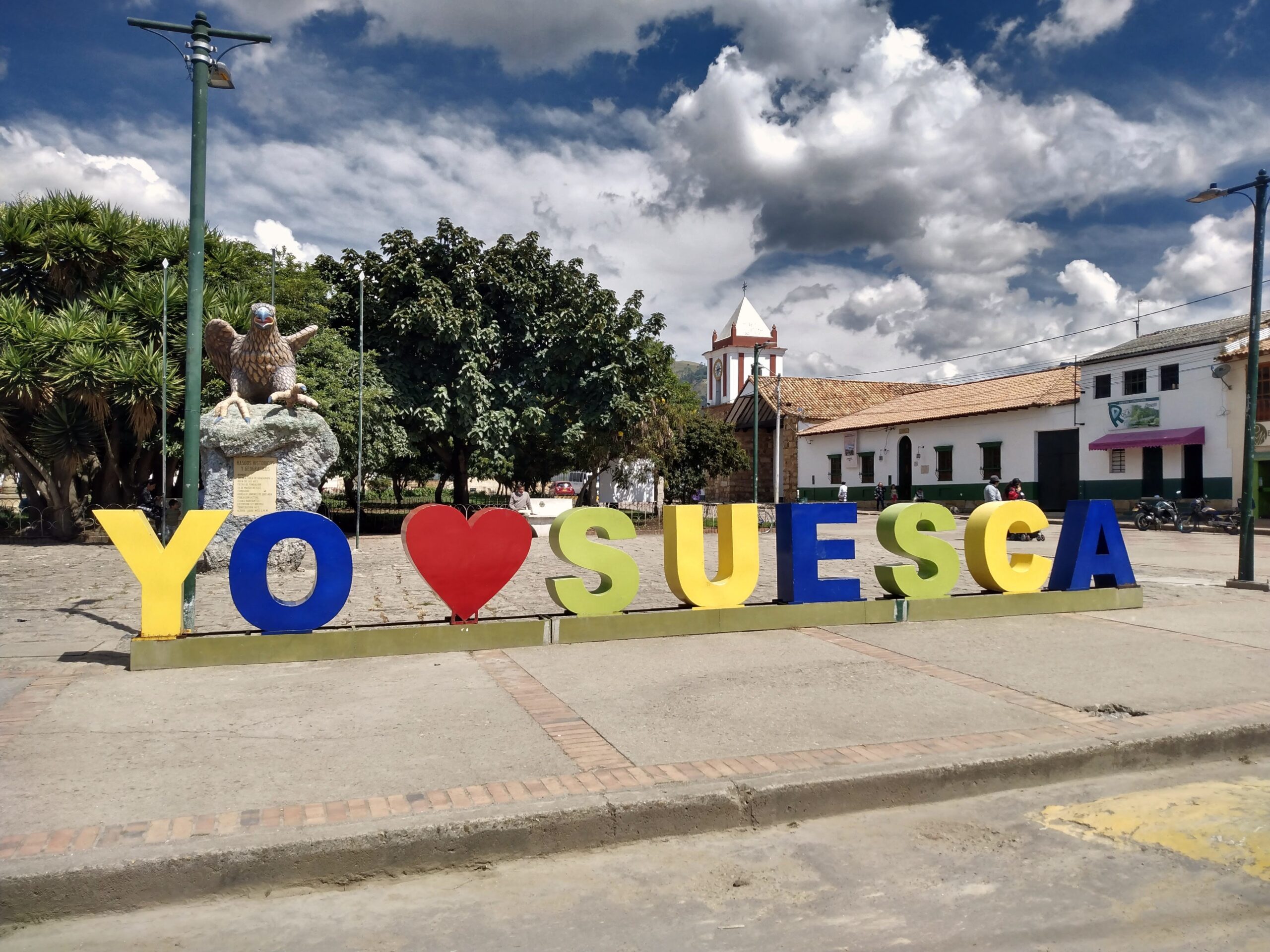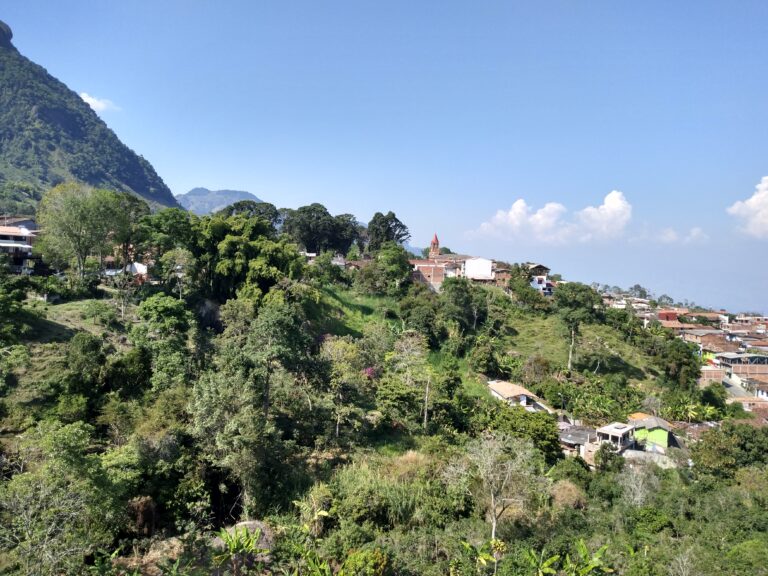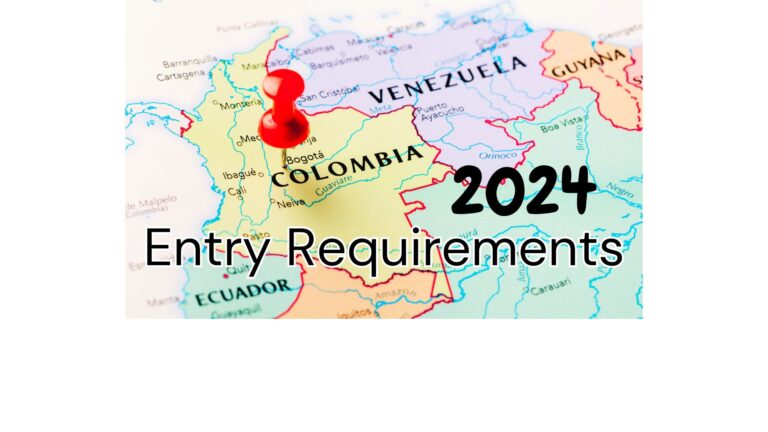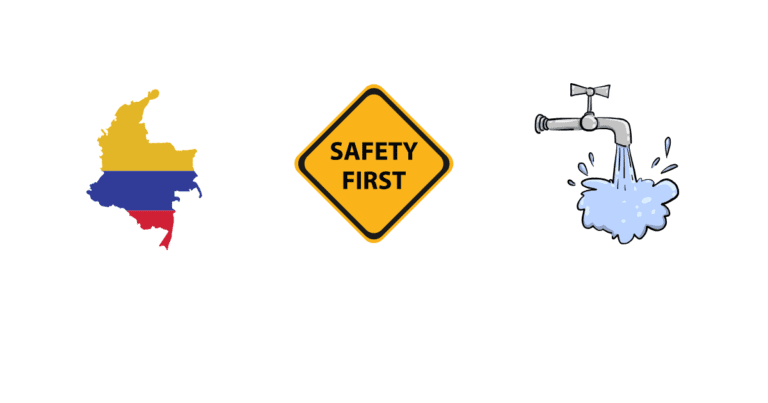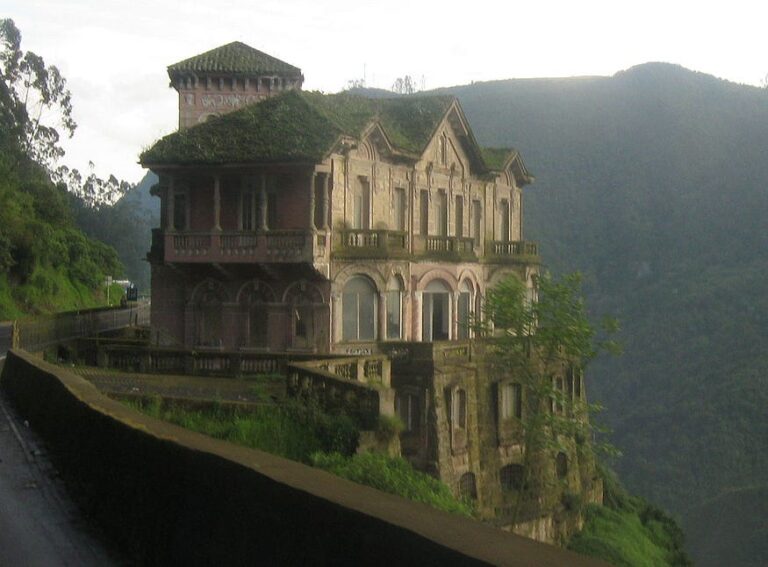Suesca, Colombia: An Unmissable Weekend Trip From Bogotá (A Climbers Paradise)
Have you ever visited a place deeply ingrained in its history and adventure? Suesca, Colombia, perfectly combines history, legend, and adventure. Legends are like the game of telephone; they started as accurate, yet as they travel through time, they become more exaggerated, bigger, and better. I always think there is a little bit of truth inside the legend.
I unknowingly ended up in Suesca, part of the Legend of El Dorado. It is also known for rock climbing, making it one of the top locations for Colombian adventures. During the weekends, the small town is packed with locals from Bogotá since it is less than an hour away.
The History Suesca, Colombia.
Suesca is approximately 37 miles north of Bogotá. It is a farming community and a haven for rock climbers, trekkers, and rafters. The name Suesca is derived from the Chibcha word Suejica, Suica, or Suesuca, which means ¨Rock of the Birds ¨.
In its early days, it was inhabited by nomadic hunters and gatherers, as the rocks provided shelter. Before the Spanish Conquest, it was also part of the Muisca Confederation.

The chief of Guatavita, who was not far away, also ruled over Suesca. Spanish conquistadors believed gold was ¨thrown¨ into the lakes and searched them while searching for El Dorado.
The Legend of El Dorado refers to the search for a magical city made of gold. It was never found, but the Spanish believed the Muiscas hid gold in the caves of the rock formations here in Suesca.

Suesca was once a central trading spot on the road to Boyacá. Merchants hauling coal and salt passed through this region on their way north. Every four days, a market was held in Suesca.
In 1602, archeologists found 150 Muisca mummies in one of the caves; they were organized in a circle around the town chief. Since then, other mummies and gold have been found throughout the lands. Most of it has ended up in the Gold Museum in Bogotá; others believe farmers have found gold, melted it, and sold it.
The Rocas de Suesca are 2.5-mile-long natural cliffs that are considered the birthplace of Colombian rock climbing. In front of the cliffs is a train track, on one side is the Bogotá River, and on the other are the cliffs. On the weekends, it is full of rock climbers from Bogotá.
The Legend of El Dorado
The legend of El Dorado led many conquistadors on a mission to be the first to discover it. El Dorado was believed to be a mystical city full of gold, including buildings made out of gold, and it was said to be located in South America.
The first reports of El Dorado began in the 16 and 17th centuries when the Spanish King heard a King in the jungles of South America was covered in Gold Dust. As the legend grew, many Europeans wanted to be the first to discover El Dorado.
1492 AD was said to be the first of many chapters in the New World, a clash of cultures, with confrontations of opposite lifestyles and systems of beliefs. The Europeans wanted to find the lost city of gold and exploit the new lands for the gold they thought they would find.
However, the South American myth of El Dorado only revealed the nature of the people living in South America and those who wanted to exploit the land for money. The stories of El Dorado drew the Spanish conquistador Jimenez de Quesada and his army of 800 to South America in search of El Dorado and other conquistadors such as Gonzalo Pizarro.
The story of Jiminez de Quesada
It is said he discovered Lake Guatavita, and he found large amounts of gold in and around the lake, which led to others wanting to come searching for gold. Many tried to drain Lake Guatavita, specifically in 1545, 1580, and 1898, but it was unsuccessful.
The last explorer to try was a British explorer named Hartley Knowles. He drained the lake almost 4 feet deep, but the mud at the bottom made it impossible to find any gold. Lake Guatavita is a National Heritage site, and searching for gold or draining the lake is illegal. The second story is about Gonzalo Pizarro.
The story of Gonzalo Pizarro
In 1541, Pizarro went to South America in search of El Dorado. He asked his friend Fransisco De Orellana to come with him. They were told the gold was in another location, not the Andes mountains but the Amazon jungle.
They took around 4000 men into the jungle but did not find El Dorado. After traveling over 200 miles, over 140 conquistadors died, and they ran out of food. Instead, Pizarro sends De Orellana to travel down the river to look for food and bring it back.
Unfortunately, there is no way to return food to those who stayed in the jungle. Pizarro then begins to think his friend has betrayed him. However, De Orellana continues into the Amazon River, and they find tribes, who talk about tribes covered in gold and cities even bigger than they imagined.
As they continued down the river, native groups eventually began to attack the Spanish. De Orellana’s group finally reached the Atlantic Ocean but never found El Dorado.
Needing another exploration, De Orellana got all the necessary supplies and returned to South America on May 11, 1545. Convinced he will find El Dorado, but everything goes differently than planned; he starts with four ships and reaches Brazil with only two ships and less than 100 men. De Orellana gets lost in the Amazon, and the city of El Dorado is never found.
Rumors spread about De Orellana that he was a liar, and maybe it was a cover-up for abandoning his friend Pizarro.
The real story, as believed by the Muisca cultures of Colombia
The legend of El Dorado, for those in South America, was not a place. A ruler who was so rich that he would cover himself in gold dust each morning. Then, wash it off in a sacred lake in the evening.
There is a belief that gold dust was only used during ceremonies on the sacred lakes. At the end of the ceremony, the King would be himself in the lake. The true story of El Dorado originates with the Muisca people. The Muisca people originated in Central Colombia from 800AD until the modern day. There is still a small population of the Muisca in Colombia.
How new leaders came into power
According to historian Enrique Gonzalez, the real story involves a right of passage carried out by the Muisca people. When a leader died within the Muisca society, the succession process for the chosen ¨golden one¨ would unfold. However, the new leader was often a relative, a nephew, or a son of the previous leader.
The new leader would go through a long initiation process. The final act would be going to the middle of a sacred lake on a raft, such as Lake Guatavita. The new leader would be surrounded by the four highest priests and covered in feathers, gold crows, and body ornaments.
The leader would be naked except for gold dust covering his body. He would then offer gold objects, emeralds, and other precious metals to the gods by throwing them into the lake. Those who were present and watching would play music and burn fires, and the new leader’s raft had fires burning all around him. Once the new leader reached the lake’s center, he would raise a flag to silence the crowd. The crowd would then commit its allegiance to the new chief.
Muisca beliefs
In the Muisca culture, gold, silver, copper, and emeralds were not wanted for their monetary value but for their spiritual powers and connection to the deities. They believed it would bring balance and harmony within the Muisca society.
¨For the Muisca of today, just as for our ancestors, gold is nothing more than an offering… gold does not represent wealth to us.¨
A gold raft was discovered in 1969 in a small cave near Bogotá. Which confirmed what archaeologists believed was the real story of El Dorado. Europeans could not comprehend that the Muiscas did not see the monetary value in gold, which was ¨thrown into a lake¨. For the European conquerors, it was a sign of wealth, and they did not understand its factual significance within the Muiscas culture.
Exploring Rocas de Suesca
I walked around the rocks and explored them; they are magical. When you look up, all you see is a cliff with some jagged rocks sticking out, making it a perfect spot for climbers to sit and enjoy the view after they reach one edge.
I saw a group of kids learning to rock climb and another guy bouldering on a big rock. I weaved in and out of the trails next to the railroad tracks and found hidden tunnels and caves.

All I thought was how the Muiscas must have sat under there, guarding themselves from the winds and rains. One part looked perfect for a bed or table, maybe even making pottery. I only walked a mile or two along the rocks, but you can walk to the next town. The train runs throughout the day.
How to get to Suesca
If you plan a visit, head to Bogotás North bus terminal. A bus leaves every 15 minutes, costs ten thousand pesos, and takes about an hour. I felt safe, and everyone was friendly. There are few foreigners, so you may get a few strange looks.
Where to stay
I stayed at a little hostel about a 15-minute walk into town and about 15 minutes from the rocks. Hostal Caminos de Suesca, I paid approximately 15 USD for a private room. The owner speaks English and Spanish, but expect a few in town to speak English if you come. It is a small pueblo, and its primary income is farming, flowers, and tourism for rock climbing and extreme sports.
If you enjoyed Suesca, continue north to Sopó. If you are in Antioquia, you may enjoy San Carlos; check that out here.

